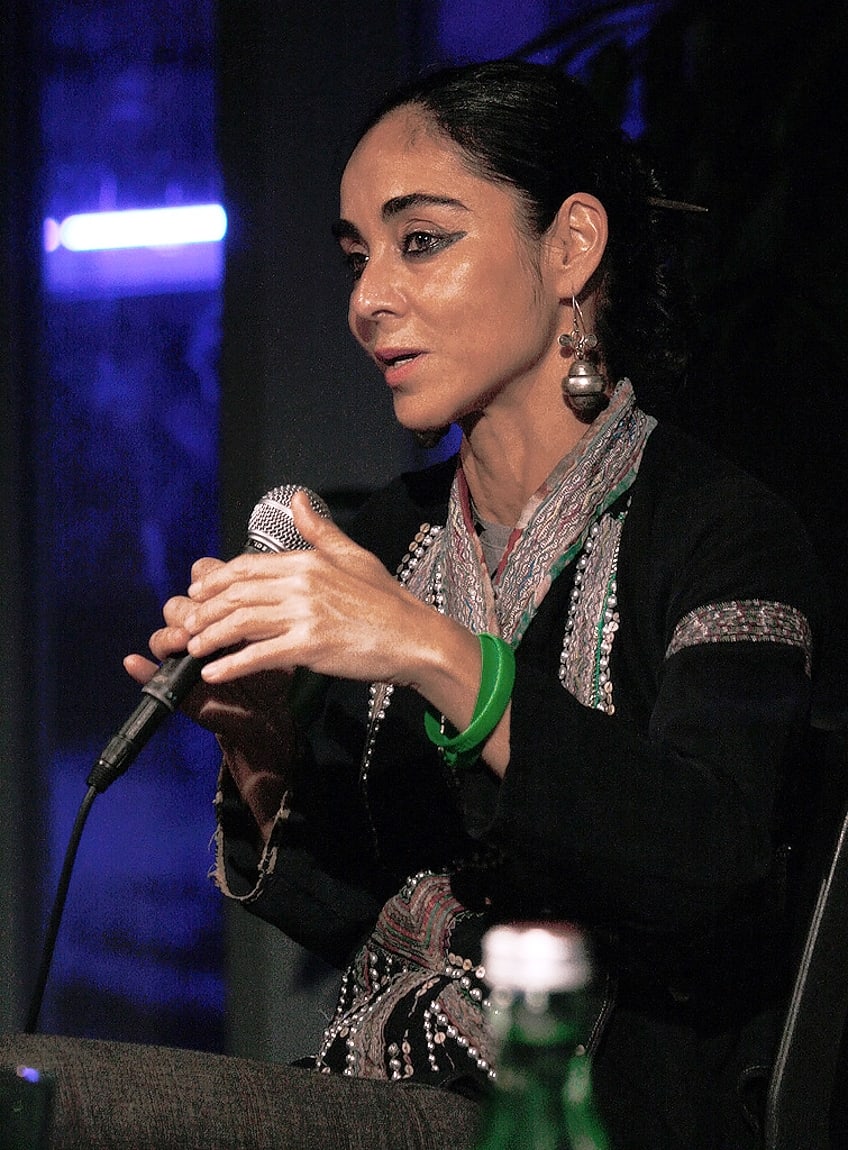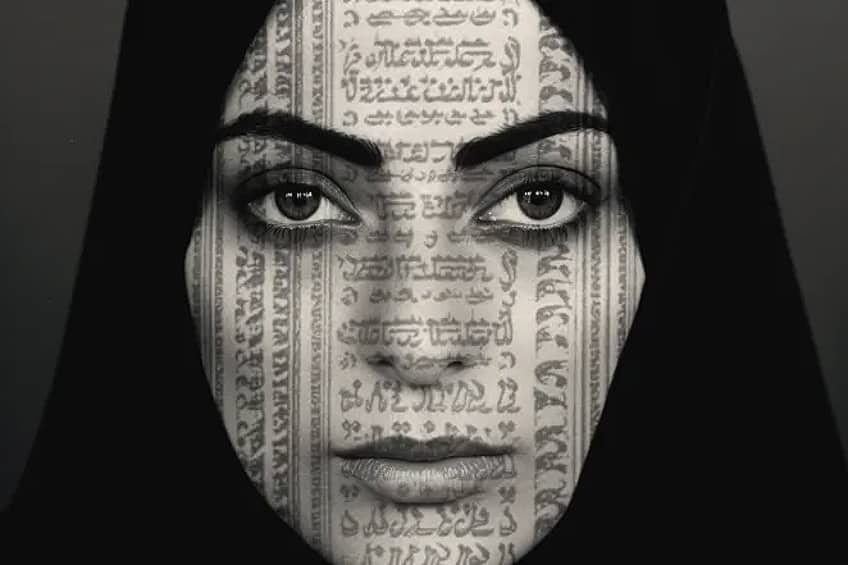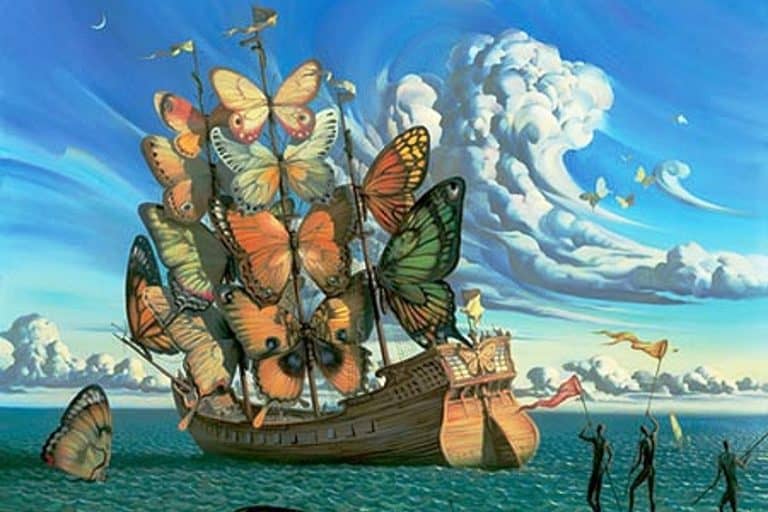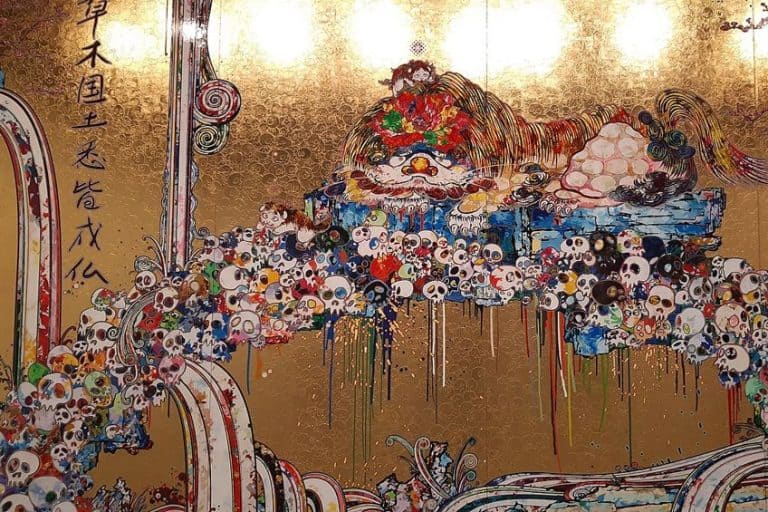Shirin Neshat – Bridging Art and Identity
Shirin Neshat’s art is a captivating exploration of identity, culture, and the human condition, inviting viewers into a world where the boundaries between East and West, tradition and modernity, and male and female are fluid and thought-provoking. Renowned for her stimulating and visually stunning creations, Shirin Neshat’s works have made an unforgettable mark on the contemporary art scene. With a unique blend of photography, film, and mixed media, she navigates the complexities of her Iranian heritage and the universal themes of power, resistance, and the individual’s struggle for self-expression. In this article, we delve into the transformative world of Shirin Neshat’s art, exploring her impactful works and the profound messages they convey.
Artist Abstract: Who Is Shirin Neshat?
| Date of Birth | 26 March 1957 |
| Age | 66 years old |
| Place of Birth | Qazvin, Iran |
| Nationality | Iranian |
| Style | Contemporary art |
Born on March 26, 1957, in Qazvin, Iran, Shirin Neshat’s formative years were shaped by the cultural and political tumult of her homeland during the 1960s and 1970s. Growing up amidst the rapid transformation of Iran from a monarchy to an Islamic Republic, Neshat experienced firsthand the profound societal shifts that would later become central themes in her art. She left Iran in 1974 to pursue her education in the United States, initially studying art at the University of California, Berkeley, and later earning a Bachelor of Fine Arts degree from the University of California, Los Angeles.

Training and Early Artworks
It was during her time in the U.S. that Neshat honed her artistic skills and began to develop her distinctive voice. Her early works were influenced by her background in photography and film, with an initial focus on exploring the complexities of identity and cultural displacement as an Iranian expatriate. Her groundbreaking series Women of Allah (1993-1997) marked a pivotal moment in her career, featuring powerful and provocative photographs of veiled Iranian women overlaid with Persian calligraphy.
This conveyed the complexities of female identity in Iran’s changing socio-political landscape.
Major Career Achievements
Shirin Neshat’s career is marked by a series of significant achievements and accolades. In 1998, her short film Turbulent won the Golden Lion award at the Venice Biennale, propelling her to international acclaim. Her subsequent films, including Rapture (1999) and Farsi (2003), continued to explore themes of gender, politics, and identity in the context of contemporary Iran. Notably, her feature film debut, Women Without Men (2009), earned her the Silver Lion for Best Director at the Venice Film Festival.
Influence on Iranian Art and Art History
Shirin Neshat’s impact on Iranian art and the broader art world cannot be overstated. Her courageous exploration of themes such as gender, oppression, and identity resonates deeply with audiences worldwide, providing a powerful voice for Iranian artists and women. Her pioneering use of multimedia art, merging photography, film, and calligraphy, has not only expanded the horizons of contemporary Iranian art but has also left an indelible mark on art history globally.
Neshat’s works continue to inspire artists to confront societal and cultural complexities with boldness and creativity, making her a vital figure in the ongoing dialogue about the role of art in addressing the pressing issues of our time.
Characteristics of Shirin Neshat’s Art
From striking juxtapositions of text and image to the seamless integration of multimedia elements, Shirin Neshat’s art is a technical tour de force that pushes the boundaries of artistic expression. In this article, we delve into the technical characteristics that define Neshat’s captivating and thought-provoking body of work, showcasing her innovative use of various mediums to convey complex narratives and emotions.

Multimedia Fusion
One of the defining features of Shirin Neshat’s art is her masterful fusion of multimedia elements. Neshat seamlessly weaves together photography, film, and calligraphy, creating a dynamic visual language that is uniquely her own.
Her ability to harmonize these distinct mediums allows her to convey layered narratives and emotions, often exploring themes of identity, gender, and cultural transformation.
Persian Calligraphy
Central to Neshat’s work is the use of Persian calligraphy as a powerful visual and symbolic element. Her calligraphic scripts, often overlaid onto photographs, serve as a bridge between the visual and linguistic realms. These intricate, flowing scripts convey messages and evoke emotions that deepen the viewer’s engagement with the artwork, offering a rich layer of cultural and historical context.

Stark Black-and-White Imagery
Neshat’s photographs and films are predominantly rendered in stark black and white, a deliberate choice that enhances the dramatic impact of her work. The absence of color underscores the starkness of her subjects’ experiences, drawing attention to the raw emotions and social tensions that permeate her narratives.
This monochromatic palette also serves to create a timeless quality in her pieces, making them relevant across different eras and cultures.
Exploration of Gender and Identity
The technical brilliance of Neshat’s art lies in her ability to convey complex ideas about gender and identity through subtle yet powerful visual cues. In many of her works, the contrast between veiled and unveiled faces symbolizes the tension between tradition and modernity, individualism and conformity. Her characters’ expressive gazes and body language further communicate the inner turmoil and resilience of those navigating these dichotomies.
Film as a Narrative Tool
Neshat’s foray into filmmaking has expanded the technical scope of her art. Her films are marked by meticulous attention to detail, from the hauntingly beautiful cinematography to the evocative soundscapes.
Through the medium of film, she provides viewers with a more immersive experience, drawing them into the worlds she creates and allowing them to engage with her narratives on a deeper level.
Political and Social Commentary
Beyond its technical prowess, Neshat’s art serves as a platform for profound political and social commentary. Her technical choices are inextricably linked to the messages she conveys, whether addressing issues of power, resistance, or cultural displacement. Each technical element in her work is a deliberate choice aimed at provoking thought and sparking conversation.
Visual and Conceptual Analysis of Shirin Neshat’s Works
In this section of the article, we embark on a journey of visual and conceptual analysis, focusing our lens on one of her acclaimed films and a famous print series. Through meticulous examination, we will delve into the intricate layers of meaning, symbolism, and technical brilliance that characterize Neshat’s art.
Join us as we unravel the profound narratives and thought-provoking imagery that lie beneath the surface of her iconic works, offering fresh insights into the complexities of human existence in a rapidly changing world.
Unveiling (1993)
| Date | 1993 |
| Medium | Installation |
| Dimensions (cm) | N/A |
| Style | Contemporary art and Modern art |
| Location | Franklin Furnace, New York City, United States |
Unveiling stands as a striking embodiment of Shirin Neshat’s ability to weave together complex narratives of identity, gender, and cultural transformation through the lens of contemporary art. This evocative installation comprises a series of large-scale photographs, each infused with layers of symbolism and meaning that invite viewers to embark on a journey of discovery and contemplation.

Veiling and Unveiling
Central to Unveiling is the juxtaposition of veiled and unveiled faces, which serves as a powerful visual metaphor for the tension between tradition and modernity, confinement and liberation. Neshat captures this duality through her use of black-and-white photography, emphasizing the stark contrast between the two opposing states.
Calligraphic Script
As a signature element of Neshat’s work, Persian calligraphy appears prominently in Unveiling. Exquisite calligraphic texts are inscribed over the faces of her subjects, blurring the line between image and language. This calligraphy, which is often both visually captivating and conceptually rich, underscores the fusion of cultural, linguistic, and visual elements in Neshat’s art.
Body Language
Neshat’s subjects exhibit powerful body language and expressive gazes that convey a range of emotions and inner turmoil. The women in the photographs exude both vulnerability and defiance, highlighting the complex experiences of individuals navigating societal expectations and personal desires.
Gender and Identity
Unveiling delves deep into the intricate relationship between gender and identity in the context of contemporary Iran. The veiled and unveiled faces reflect the multifaceted nature of female identity, echoing the challenges and choices faced by women in a society grappling with tradition and modernity.
Cultural Transformation
Neshat’s installation captures a pivotal moment in Iran’s cultural and political history. The calligraphy, juxtaposed with the images, suggests the evolving role of language and culture in shaping identity during a period of profound transformation.
Power and Resistance
The expressive gazes and the subtle defiance in the body language of Neshat’s subjects hint at themes of power and resistance. The women depicted in Unveiling challenge the status quo and assert their agency, providing a poignant commentary on the dynamics of power in society.
East-West Dialogue
Neshat’s work often engages in a dialogue between Eastern and Western cultural elements. Unveiling exemplifies this dialogue through its fusion of Persian calligraphy with contemporary photography, inviting viewers to contemplate the interplay of cultural influences.
Women Without Men (2010)
| Medium | Film |
| Release Date | 12 March 2010 |
| Genre | Drama/Adaptation |
| Length (minutes) | 95 |
| Distributed by | IndiePix Films, New York City, United States |
Women Without Men, a cinematic masterpiece directed by the visionary artist Shirin Neshat in 2010, is a tour de force that transcends traditional boundaries between art and film. This visually stunning and conceptually rich work weaves together multiple narratives, exploring themes of gender, freedom, and political upheaval against the backdrop of 1953 Iran. Through meticulous visual storytelling and layered symbolism, Neshat creates a compelling cinematic experience that challenges viewers to contemplate the profound complexities of human existence.
Visual Elements
Cinematographic Brilliance: Neshat’s film is a feast for the eyes, featuring breathtaking cinematography that captures the ethereal beauty of both natural landscapes and urban environments.
The visual language she employs, characterized by lush, dreamlike sequences and striking compositions, adds depth to the film’s storytelling.
Metaphorical Imagery
Throughout Women Without Men, Neshat employs metaphorical imagery to convey complex emotions and ideas. The garden, for instance, becomes a recurring motif symbolizing both sanctuary and liberation, while the river represents a journey of transformation and self-discovery.
The Veil and Unveiling
As in her other works, Neshat explores the symbolism of the veil and the act of unveiling, in Women Without Men this motif also features. Through both visual and narrative elements, she delves into the complexities of female identity in a society marked by cultural and political turmoil.
Gender and Agency
Women Without Men is a deeply feminist work that explores the agency and resilience of its female protagonists. Each woman confronts societal constraints and seeks liberation in her own way, highlighting the multifaceted nature of female empowerment.
Political and Social Commentary
Set against the backdrop of the 1953 Iranian coup d’état, the film serves as a commentary on the socio-political landscape of the time. It illuminates the impact of political upheaval on individual lives and underscores the way larger historical forces shape personal destinies.
Spiritual and Existential Quests
Neshat’s film is not solely grounded in political or social commentary; it also delves into the spiritual and existential journeys of its characters. The garden, in particular, becomes a space of introspection and transformation, inviting viewers to contemplate the pursuit of inner freedom.
Cultural Duality
Women Without Men engages in a dialogue between traditional and modern elements of Iranian culture. This duality is visually and thematically explored as the characters navigate the tension between tradition and modernity.

In the enchanting realm of contemporary art, Shirin Neshat’s contributions stand as a testament to the power of artistic expression in exploring the intricate facets of our world. Through her provocative and visually remarkable works, Shirin Neshat has not only surpassed artistic boundaries but also ignited essential dialogues surrounding individuality, gender, civilization, and politics. Her innovative fusion of multimedia elements, mastery of Persian calligraphy, and the haunting beauty of her black-and-white imagery have left a memorable imprint on the canvas of modern art. With each stroke of her artistic brilliance, Shirin Neshat continues to illuminate the human experience, inviting us to engage in a deeper, more profound understanding of our shared existence. Her art endures as an ongoing testament to the limitless possibilities of creative expression, demonstrating that, in the hands of a visionary like herself, art can be a potent force for transformation and enlightenment.
Frequently Asked Questions
What Is Shirin Neshat Best Known For?
Shirin Neshat is best known for her groundbreaking and thought-provoking works of art that explore complex themes of identity, gender, and culture, often set against the backdrop of contemporary Iran. She is renowned for her multimedia creations, including photography, film, and installations, which seamlessly blend visual and conceptual elements. Neshat’s iconic use of Persian calligraphy overlaid on images, as well as her powerful portrayal of veiled and unveiled faces have become hallmarks of her artistic style, making her a prominent figure in the world of contemporary art. Her acclaimed films, such as Women Without Men (2010), have also garnered widespread recognition, cementing her status as a visionary artist whose work challenges and inspires audiences globally.
What Are Some Interesting Facts About Shirin Neshat?
Several interesting facts about Shirin Neshat illuminate her remarkable career and contributions to the world of art. First and foremost, she was born in Iran but left the country before the Islamic Revolution, which later deeply influenced her artistic exploration of identity and culture. Another notable fact is her background in women’s studies, which has informed her feminist perspective and the themes she explores in her art. Additionally, her film titled Women Without Men (2010) received the Silver Lion for Best Director at the Venice Film Festival in 2009, highlighting her versatility as an artist who excels in both visual and cinematic storytelling. Neshat’s ability to seamlessly blend different media, including photography, film, and calligraphy, underscores her innovative approach to art, making her a trailblazing figure in contemporary art and a source of inspiration for many.
What Is the Central Theme of Shirin Neshat’s Works?
The central theme of Shirin Neshat’s works revolves around the exploration of complex issues related to individuality, cultural expression, gender roles, and societal norms. Through her powerful and evocative works, she delves deep into the multifaceted nature of human existence, often using the backdrop of her Iranian heritage to convey universal truths. Neshat’s art is a poignant commentary on the struggles and triumphs of individuals navigating the dichotomies of tradition and modernity, veiling and unveiling, and personal freedom within societal constraints. Her work challenges viewers to contemplate the intricacies of these themes and invites them to engage in a broader dialogue about the human experience.
How Does Shirin Neshat Create Her Art?
Shirin Neshat creates her art through a unique and innovative blend of multimedia techniques. Her works often involve the skillful integration of photography, movie-making, and calligraphy. Neshat uses black-and-white photography to capture striking visuals that emphasize the contrast between veiled and unveiled faces. Persian calligraphy, inscribed onto the images, adds layers of cultural and symbolic meaning. In addition to photography, Neshat has ventured into filmmaking, where she extends her thematic exploration through cinematic storytelling. Her ability to seamlessly combine these diverse artistic mediums enables her to convey profound narratives and emotions while pushing the boundaries of contemporary art.
Nicolene Burger is a South African multi-media artist, working primarily in oil paint and performance art. She received her BA (Visual Arts) from Stellenbosch University in 2017. In 2018, Burger showed in Masan, South Korea as part of the Rhizome Artist Residency. She was selected to take part in the 2019 ICA Live Art Workshop, receiving training from art experts all around the world. In 2019 Burger opened her first solo exhibition of paintings titled, Painted Mantras, at GUS Gallery and facilitated a group collaboration project titled, Take Flight, selected to be part of Infecting the City Live Art Festival. At the moment, Nicolene is completing a practice-based master’s degree in Theatre and Performance at the University of Cape Town.
In 2020, Nicolene created a series of ZOOM performances with Lumkile Mzayiya called, Evoked?. These performances led her to create exclusive performances from her home in 2021 to accommodate the mid-pandemic audience. She also started focusing more on the sustainability of creative practices in the last 3 years and now offers creative coaching sessions to artists of all kinds. By sharing what she has learned from a 10-year practice, Burger hopes to relay more directly the sense of vulnerability with which she makes art and the core belief to her practice: Art is an immensely important and powerful bridge of communication that can offer understanding, healing and connection.
Nicolene writes our blog posts on art history with an emphasis on renowned artists and contemporary art. She also writes in the field of art industry. Her extensive artistic background and her studies in Fine and Studio Arts contribute to her expertise in the field.
Learn more about Nicolene Burger and the Art in Context Team.
Cite this Article
Nicolene, Burger, “Shirin Neshat – Bridging Art and Identity.” Art in Context. November 24, 2023. URL: https://artincontext.org/shirin-neshat/
Burger, N. (2023, 24 November). Shirin Neshat – Bridging Art and Identity. Art in Context. https://artincontext.org/shirin-neshat/
Burger, Nicolene. “Shirin Neshat – Bridging Art and Identity.” Art in Context, November 24, 2023. https://artincontext.org/shirin-neshat/.











